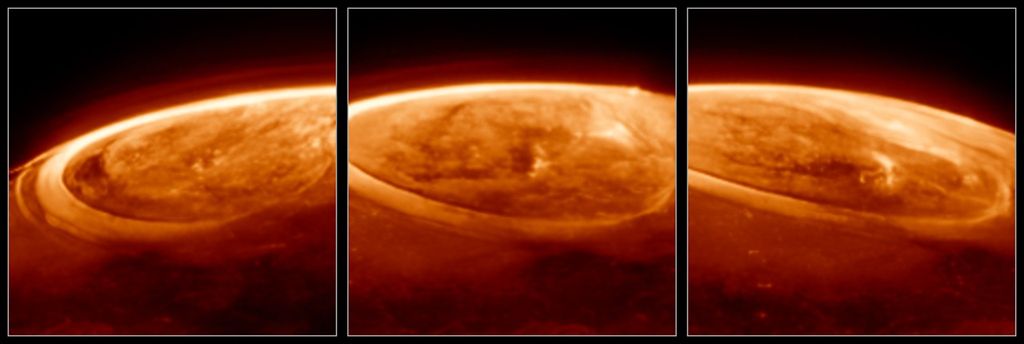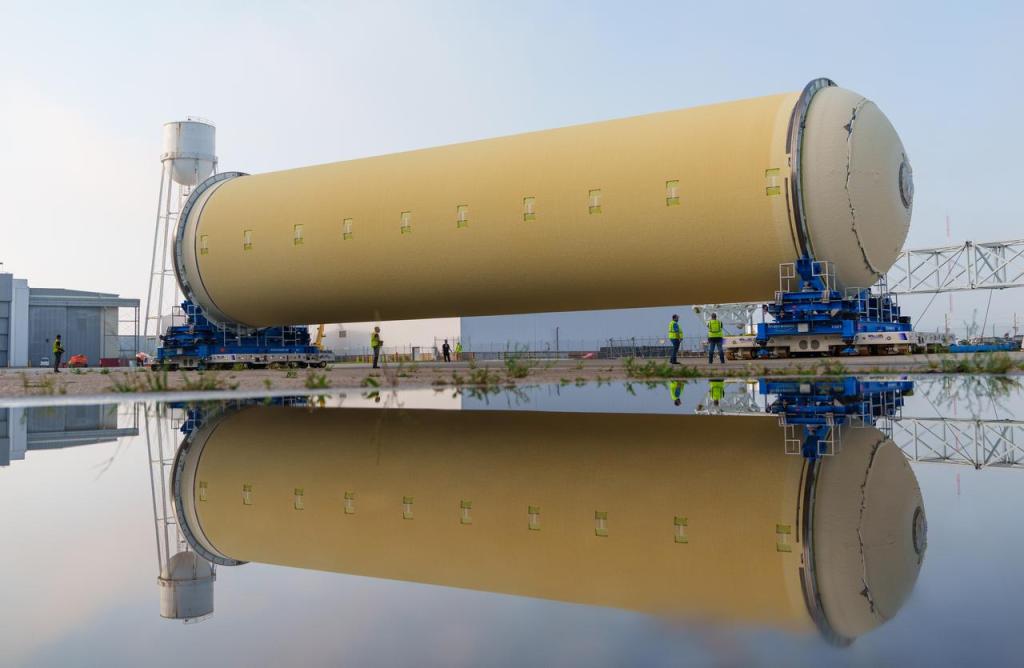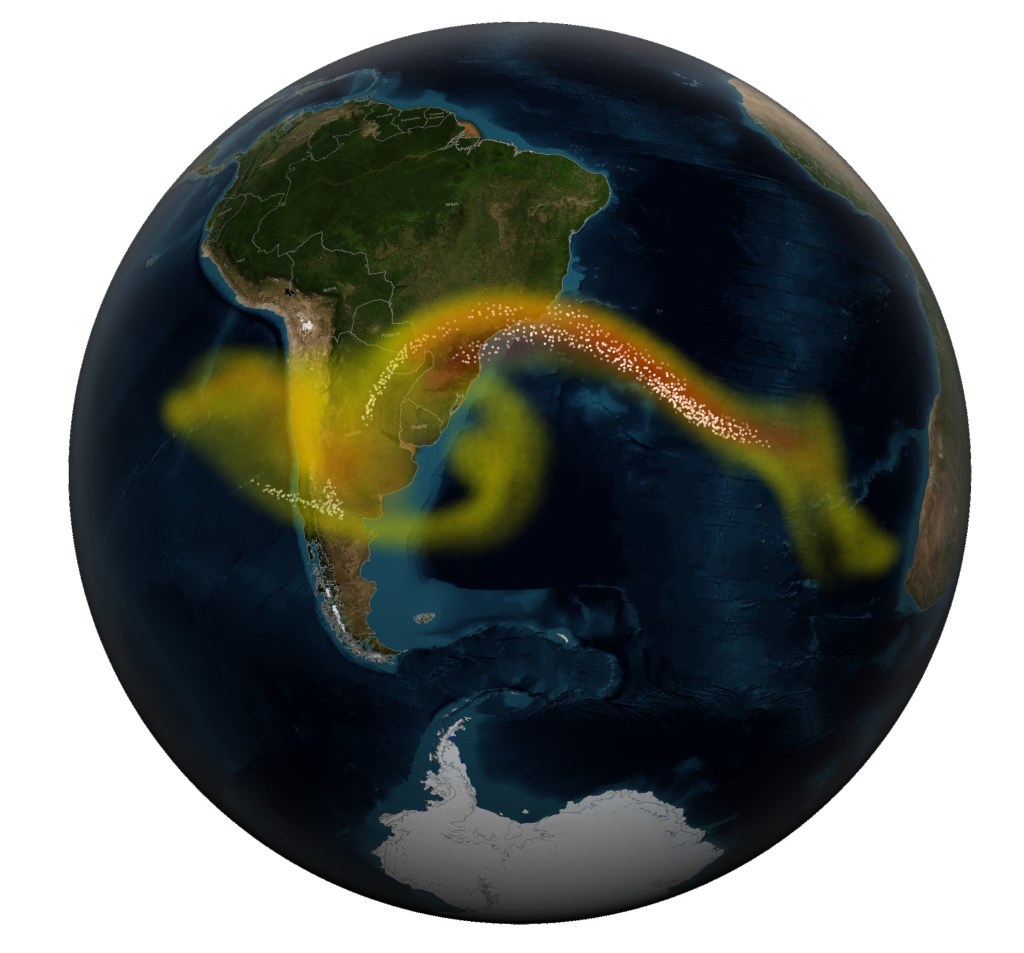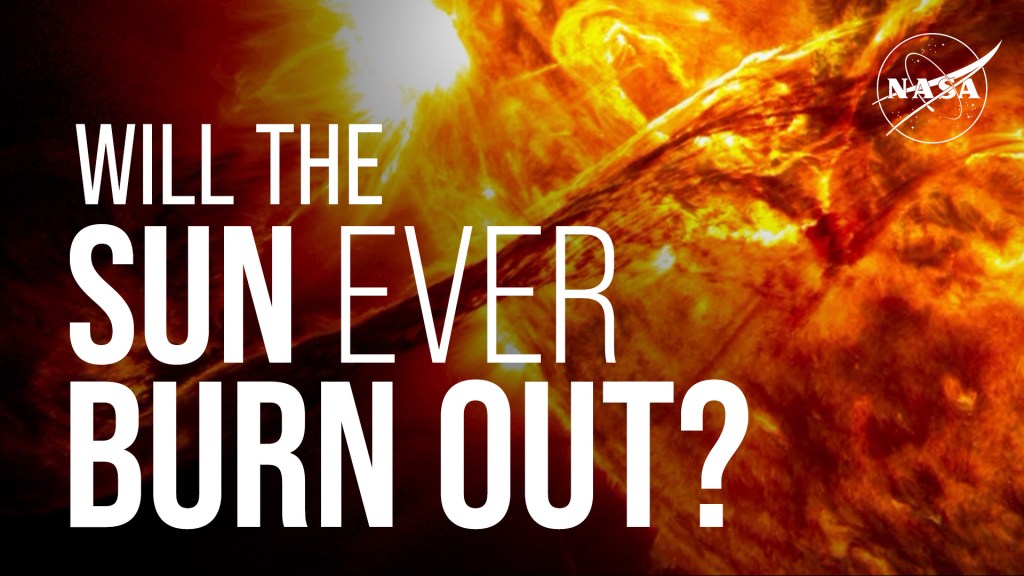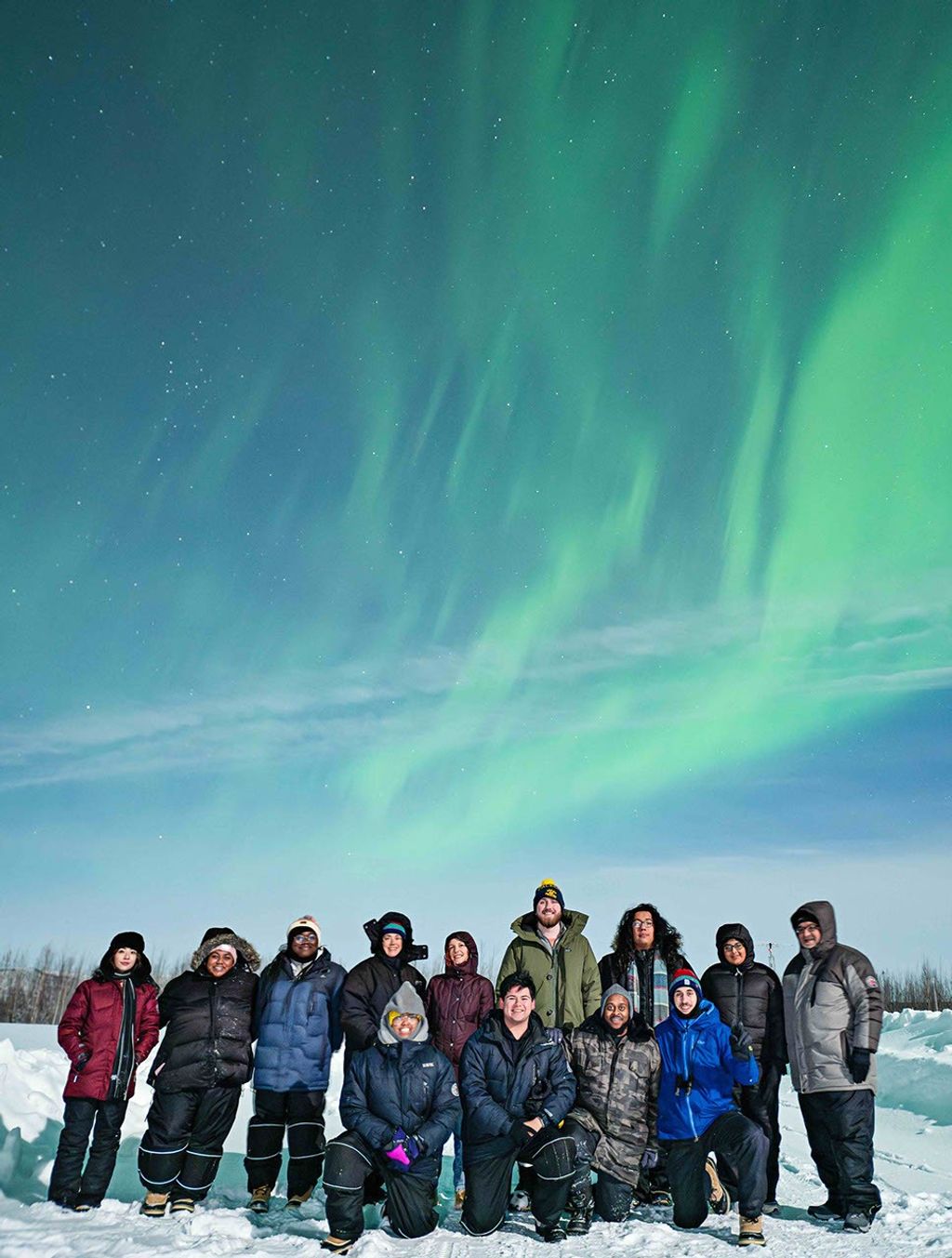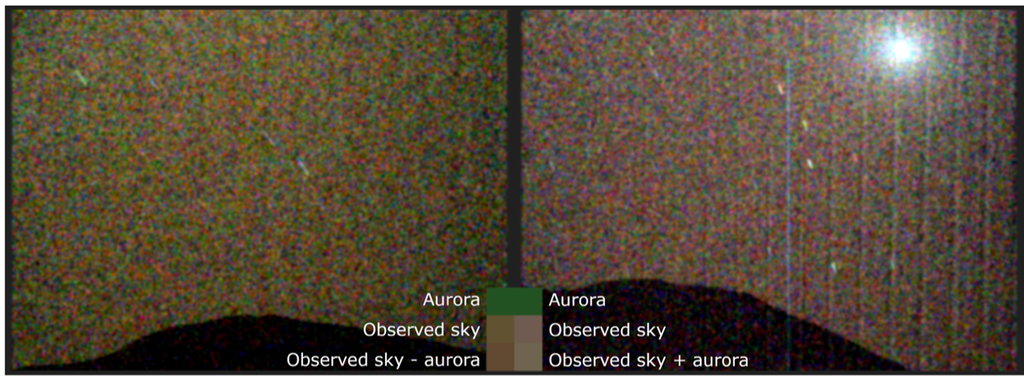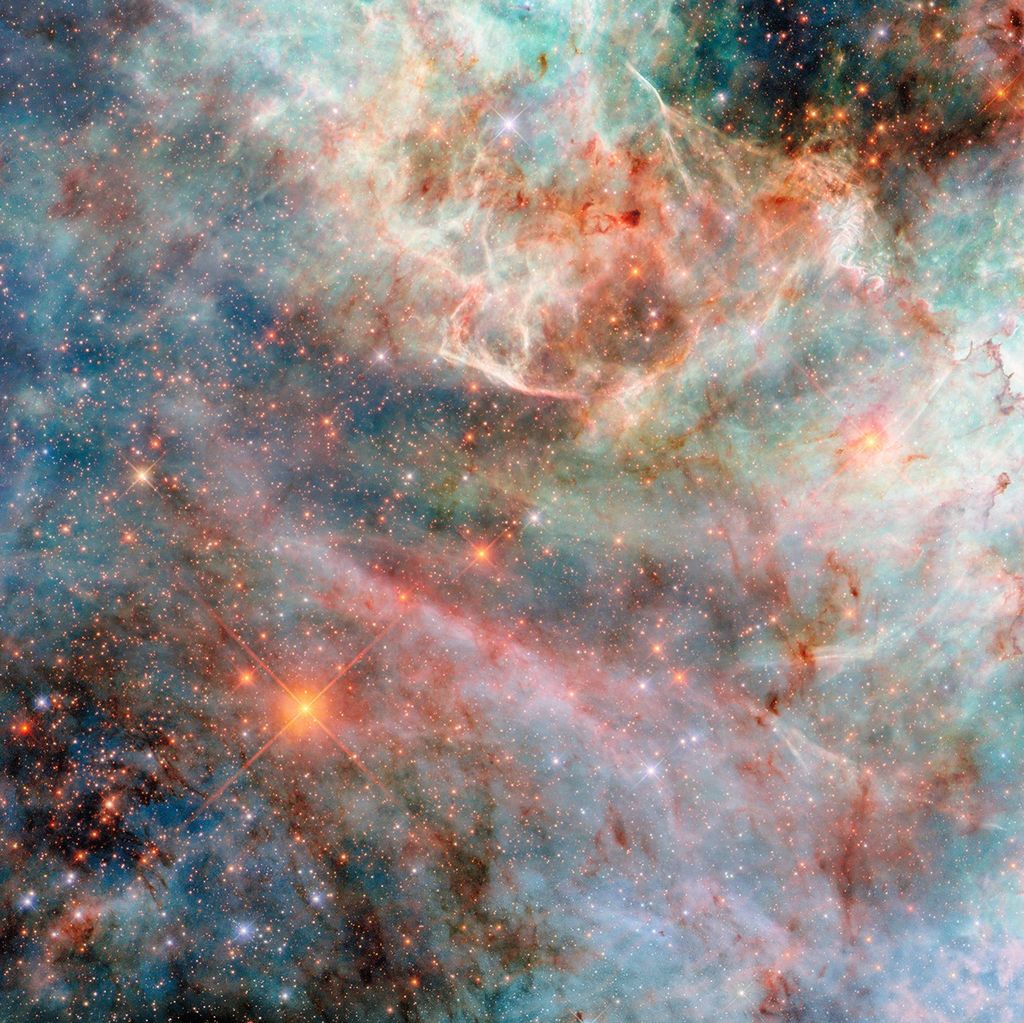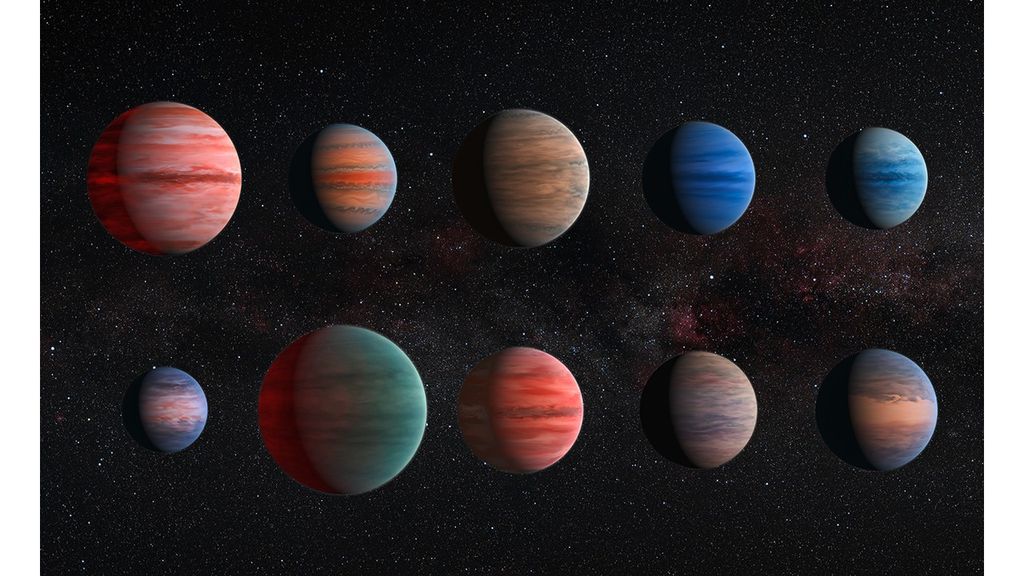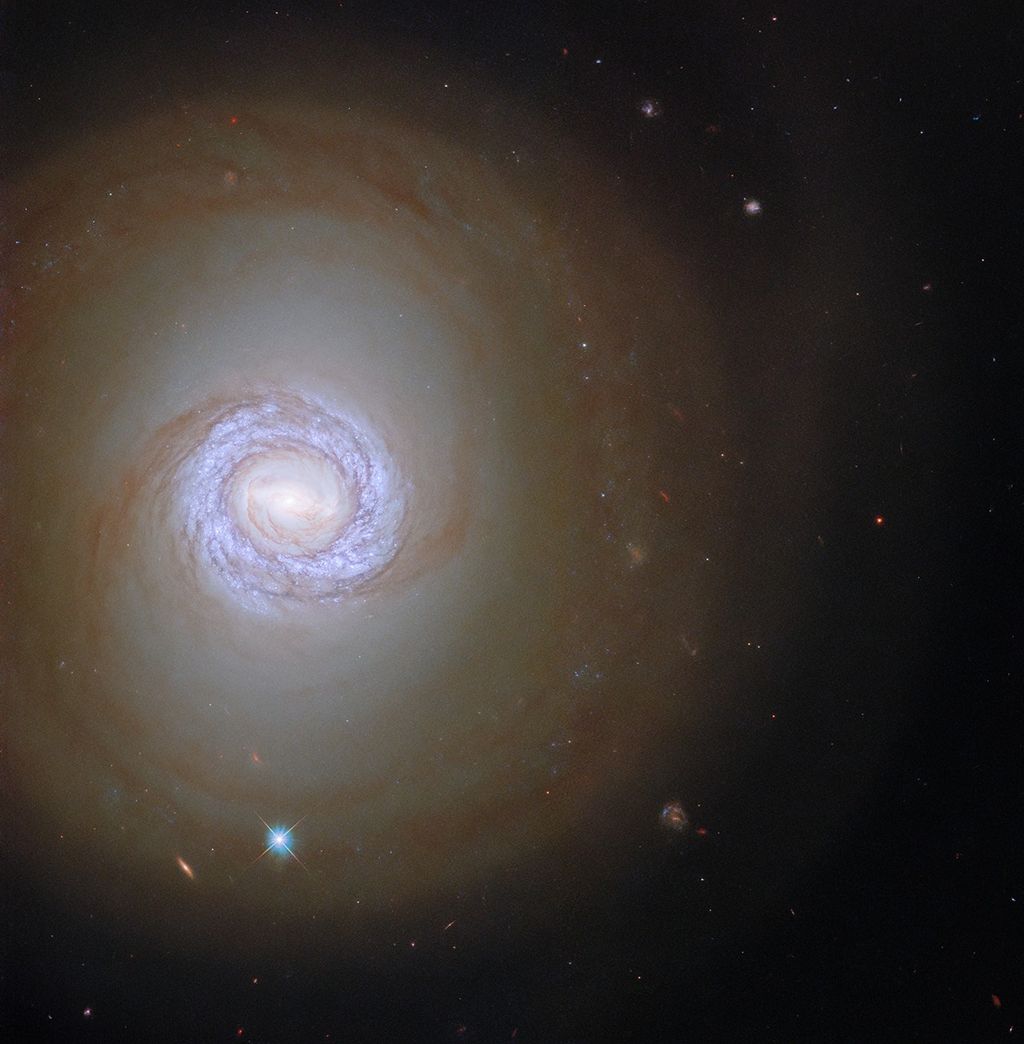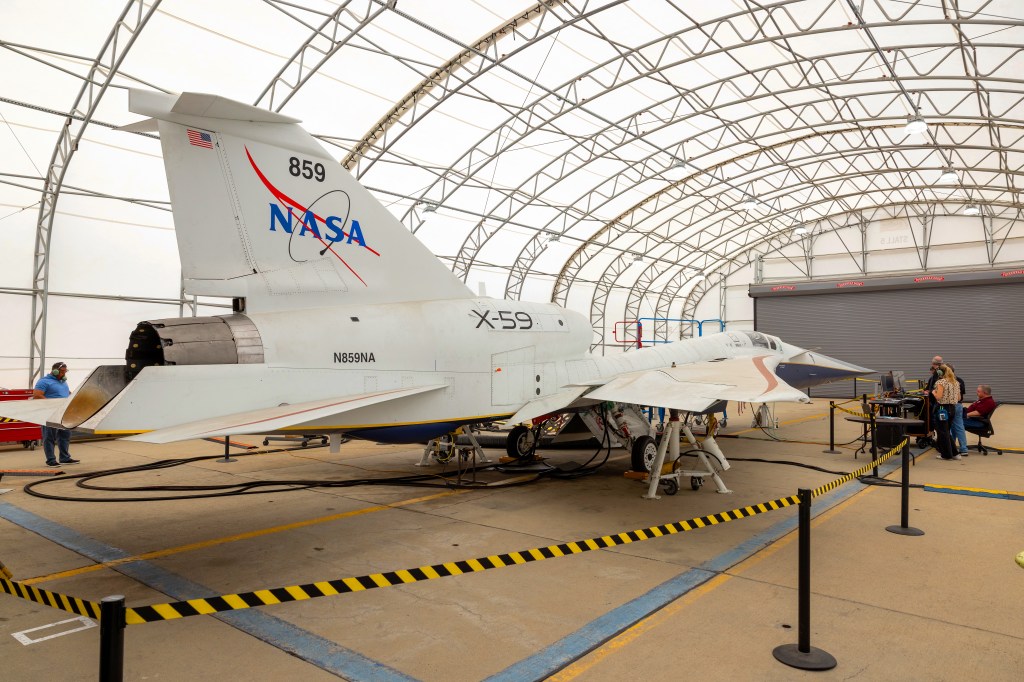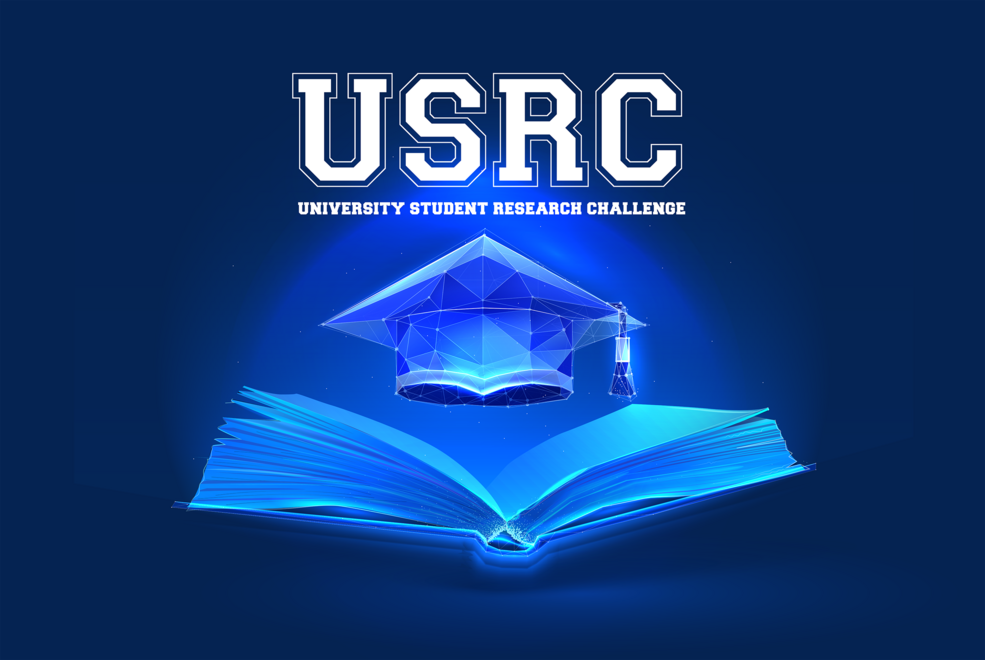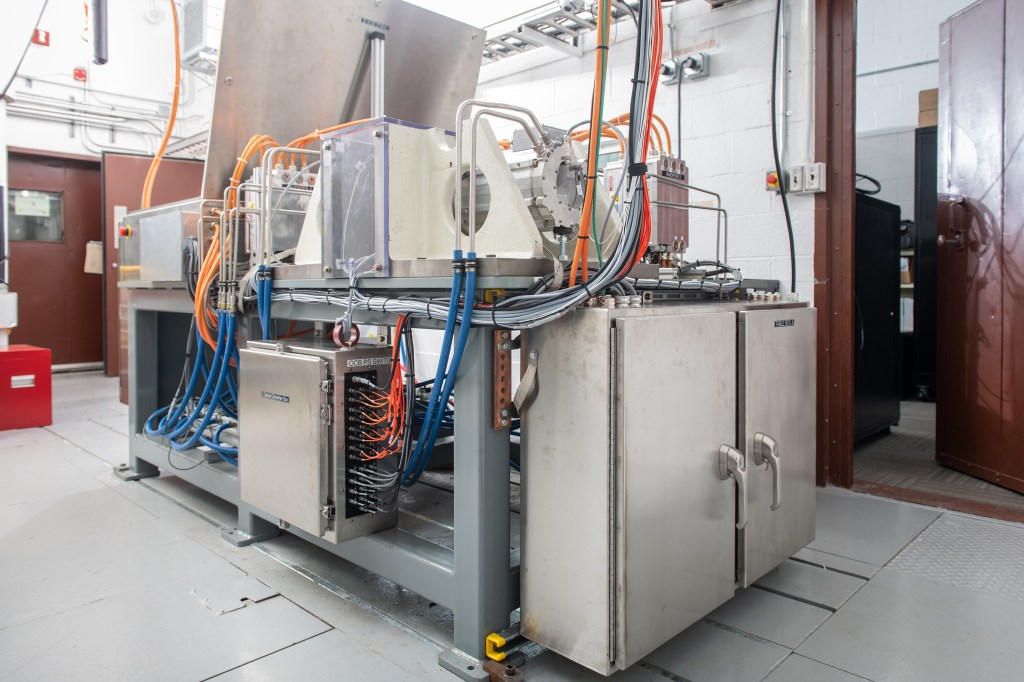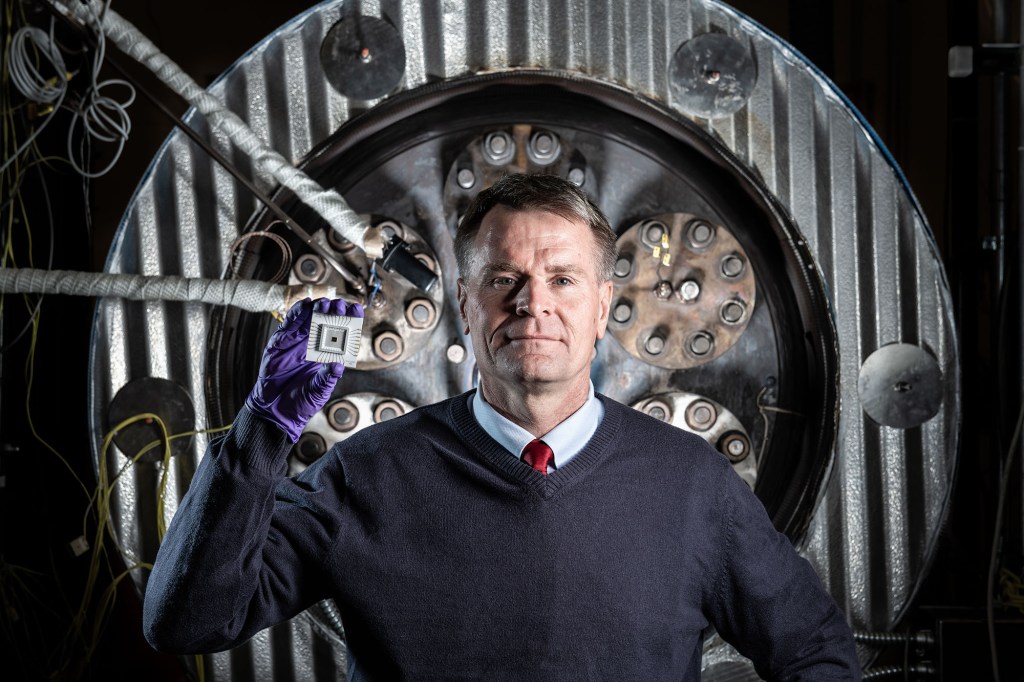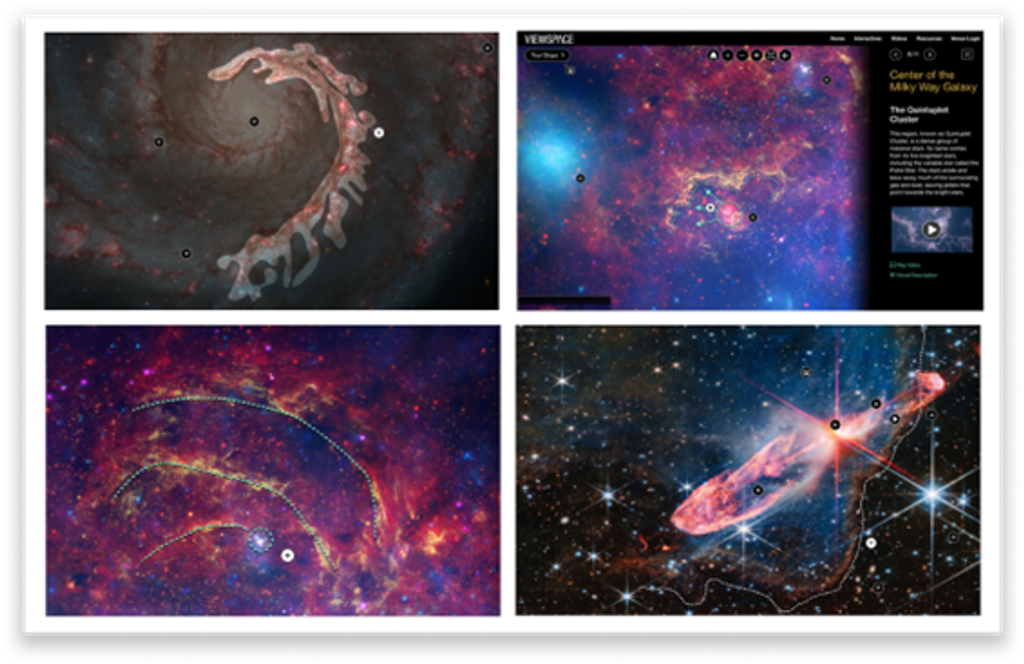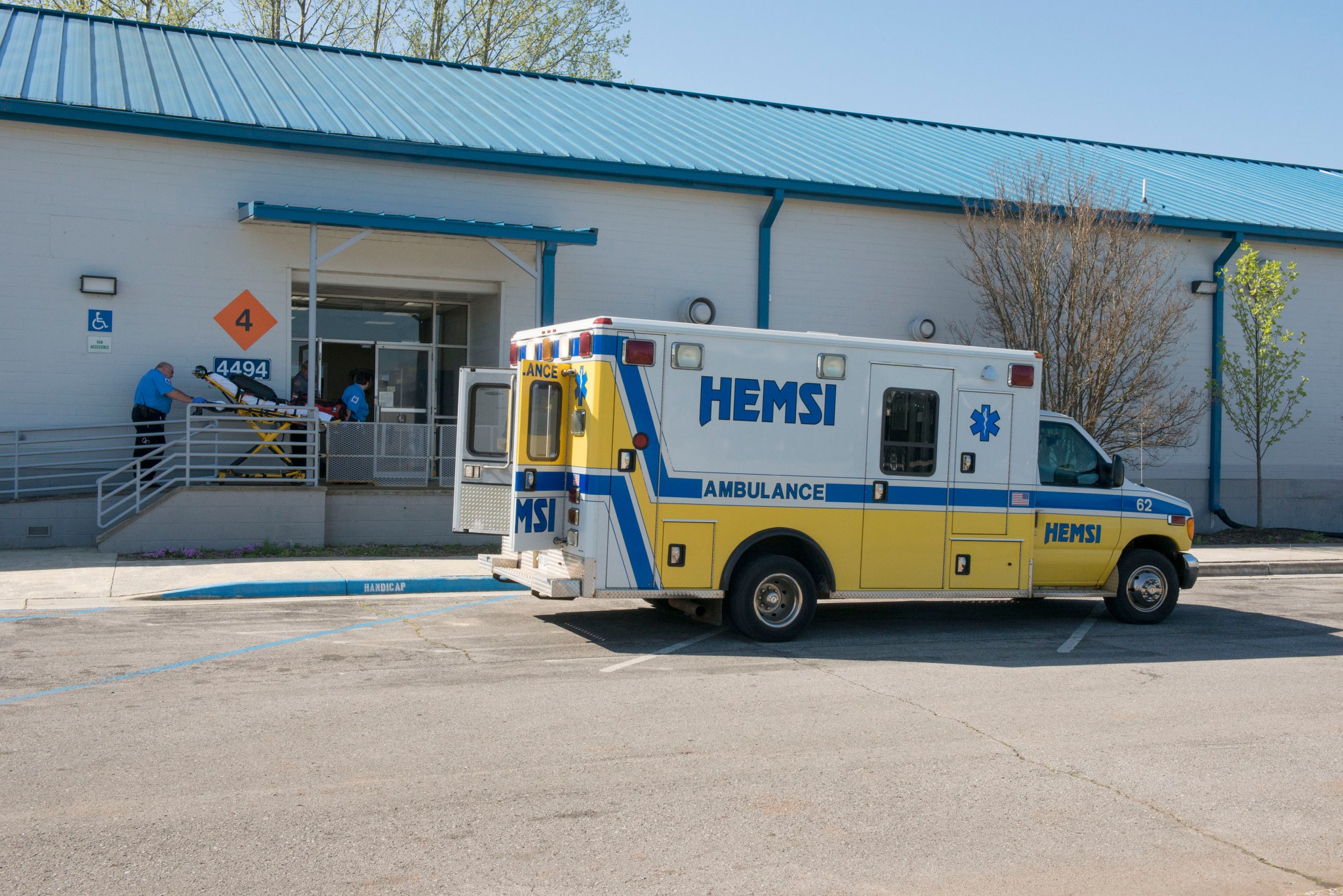In This Week’s Star
- Director’s Corner: Delivering on the Promise of the Future
- NASA Showcases Flight Engine Test During Stennis Open House
- An Atmosphere Around the Moon? NASA Research Suggests Significant Atmosphere in Lunar Past and Possible Source of Lunar Water
- Fermi Gamma-ray Burst Monitor Wakes the World to Smashing Neutron Stars
- Chandra Makes First Detection of X-Rays from a Gravitational Wave Source
- Expedition 53 Spacewalk Successfully Comes to an End
- Marshall Celebrates National Disability Employment Awareness Month
- Marshall Celebrates America Recycles Day with Annual ‘Go Green — Buy Local’ Event
- Marshall Ambulance Services to Change Effective Nov. 1
- This Week in NASA History: STS-34 Lands – Oct. 23, 1989
Director’s Corner: Delivering on the Promise of the Future
Three weeks ago, I stood at a podium in a Capitol Hill banquet room and talked about the future — about what it demands of our national space program, and NASA Marshall Space Flight Center’s place in it. For the second year in the row, I was the guest speaker at the Space Transportation Association’s Luncheon, an event which brings together space community thought-leaders and decision-makers from across government and industry — including U.S. Rep. Mo Brooks of Alabama’s 5th Congressional District and U.S. Rep. Robert Aderholt of Alabama’s 4th Congressional District — to hear about critical issues and ideas that are shaping space policy and investments in the United States. On the heels of the Vice President’s tour of our facilities; the U.S. Army Aviation and Missile Research, Development, and Engineering Center; as well as the first meeting of the National Space Council, I saw an opportunity to clearly articulate why the work we are doing is so crucial to forging America’s place in the 21st century space revolution and renewing our national leadership in space.
It was an opportunity to “go big” for Marshall and NASA.
NASA’s Space Launch System is absolutely vital to the future, but the true value of the rocket and the work we are doing is its connection to our priorities and goals from Earth to the outer solar system. Spaceflight is emerging as a viable commercial and international capability; a development that brings the future into focus for Marshall and NASA. I’ve said it many times before: Getting one inch off the ground is the hardest part when it comes to space. But, the agency’s commitment to knowledge-transfer and the inevitable pull of technological innovation are putting low-Earth orbit in reach of a growing number of countries and companies.
So, our job is not to just get one inch off the ground, but to advance space exploration and science for the good of our nation — maximizing the benefits of work here at home, and for our friends and allies across the world. To achieve this, we not only need a next-generation rocket designed to expand humankind’s reach across solar system, but all the elements needed to sustainably enable safety, scientific progress, global engagement and economic opportunities. For the United States, this is space leadership in the new millennium — getting one inch off the ground, and then turning that inch into a “great leap.”
As long as our programs, projects and capabilities are aligned with this greater purpose, the center will be well-positioned to support future missions in deep space — to the Moon, Mars, Europa and beyond. So, as the National Space Council formulates space policy and begins to clarify near-term priorities, we’ll be ready to execute.
For Marshall, this means a full plate for the foreseeable future — and that is a very good thing. It’s our responsibility to deliver on the promise of the future by successfully readying SLS and NASA’s Orion spacecraft for that first, critical flight, while continuing to support International Space Station science and payload operations, propulsion, habitat and life-support systems for deep space, astrophysics, manufacturing innovation and all of the other priorities that underpin the future of our national space program. With every weld, milestone and mission success, the cadence of accountability will get a little more brisk and demand we get the job done despite the pace — safely, on time and on budget.
This is not too big a moment for Marshall and its people — this is exactly where we want to be, and a position we know well. Our track record speaks for itself: The road to space goes through the Rocket City. Just wait until SLS launches for the first time. The world will be watching as the rocket climbs into the upper atmosphere, announcing a return to NASA missions that put the once unreachable, in reach of humankind, again. It will be a 21st century game-changer for the national space program and the center — we just need to get there. I have no doubt that this team is the right one to lead the way.
The 10th Annual Von Braun Symposium kicked off Oct. 24, and I’m bringing this message to our friends from across government, industry and academia. This event always puts a spotlight on Huntsville and Marshall’s contributions to the space community, and is a terrific opportunity for all of us to engage, learn and lead, as we build on the progress of an awesome year, and look ahead to the challenges of the next. I hope you can find a way to participate, whether it’s in person or by watching the live stream of the various speakers and panels.
I want to conclude this piece by saying thank you. When I meet with folks around the country, whether it’s at an event like the Space Transportation Association, or a panel discussion with a regional flavor, like the one I was part of at the Aerospace Alliance Annual Summit in New Orleans, you enable me to tell a success story — to talk about how we are on the leading edge of America’s future in space. I will continue to do everything I can to position Marshall and its people for enduring success.
NASA Showcases Flight Engine Test During Stennis Open House
Engineers test an RS-25 flight engine for NASA’s new heavy-lift rocket, the Space Launch System, at NASA’s Stennis Space Center Oct. 19. The engine, E2063, which is scheduled to help power the rocket on its second mission, Exploration Mission-2, was successfully tested to full duration — 500 seconds. With data from this and prior tests, NASA is proceeding with flight certification for the RS-25 for use on SLS flights. More than 1,500 people observed this test as part of the Stennis Founders Day Open House. Developed and managed by NASA’s Marshall Space Flight Center, the SLS rocket will be the most powerful ever built and with NASA’s Orion spacecraft, will enable a new era of space exploration beyond Earth orbit into deep space. For more information about the test, click here. (NASA/Stennis)
An Atmosphere Around the Moon? NASA Research Suggests Significant Atmosphere in Lunar Past and Possible Source of Lunar Water
By Will Bryan
Looking up at the Moon at night, Earth’s closest neighbor appears in shades of gray and white; a dry desert in the vacuum of space, inactive and dead for billions of years. Like many things, though, with the Moon, there is so much more than what meets the eye.
Research completed by NASA Marshall Space Flight Center planetary volcanologist Debra Needham and planetary scientist David Kring at the Lunar and Planetary Institute in Houston, suggests that billions of years ago the Moon actually had an atmosphere. The ancient lunar atmosphere was thicker than the atmosphere of Mars today and was likely capable of weathering rocks and producing windstorms. Perhaps most importantly, it could be a source for some, if not all, of the water detected on the Moon.
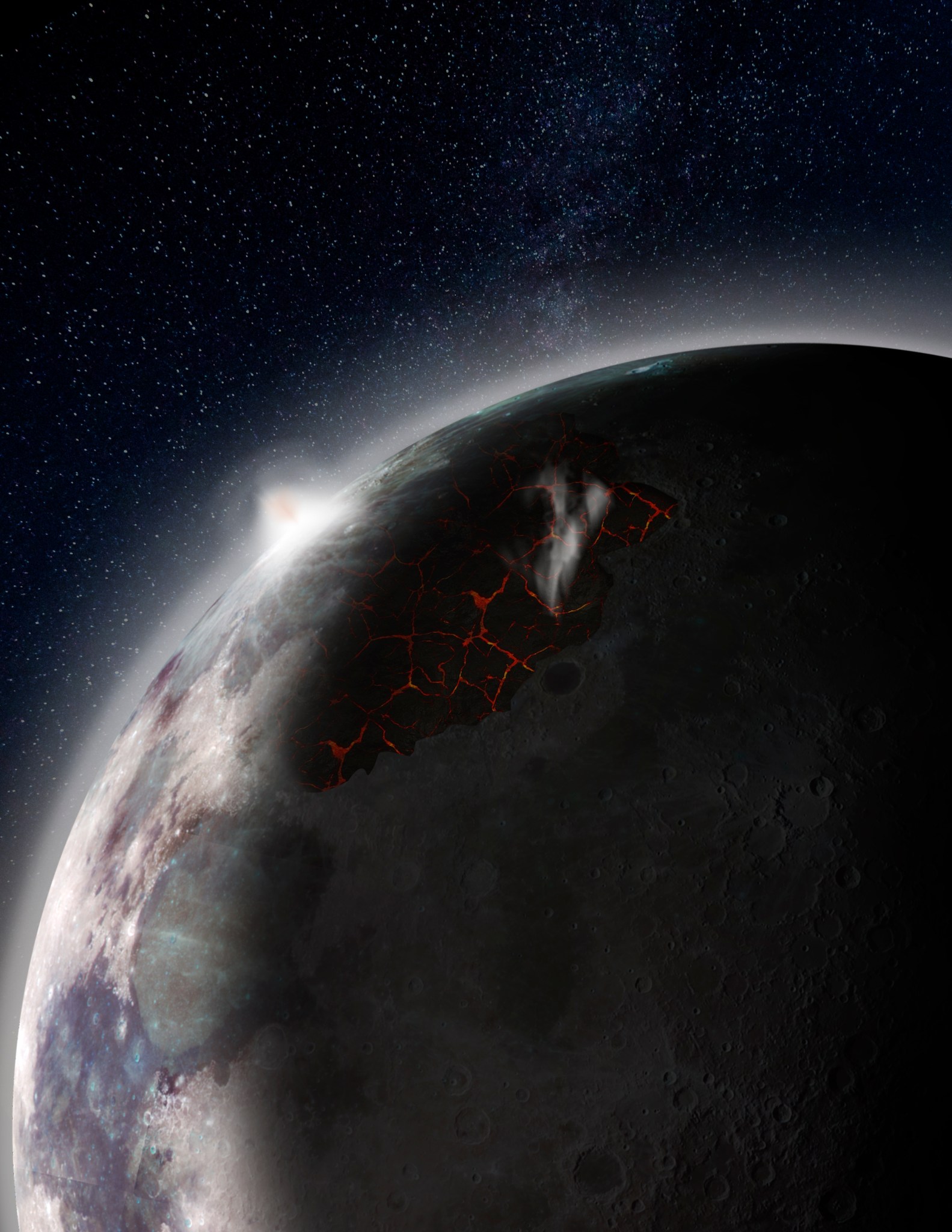
“It just completely changes the way we think of the Moon,” said Needham, a scientist in Marshall’s Science and Technology Office. “It becomes a much more dynamic planetary body to explore.”
Needham presented the research at the annual Geological Society of America conference in Seattle on Oct. 22. The research paper, available online, will be published in the Nov. 15 issue of Earth and Planetary Science Letters.
Discovering the existence, thickness and composition of the atmosphere began with understanding how much lava erupted on the Moon 3.9 billion to one billion years ago, forming the lava plains we see as the dark areas on the surface of the Moon today. Needham and Kring then used lab analyses of lunar basalts — iron and magnesium-rich volcanic rocks — returned to Earth by the Apollo crews to estimate the amounts and composition of gases, also called volatiles, released during those volcanic eruptions.
The short-lived atmosphere — estimated to have lasted approximately 70 million years — was comprised primarily of carbon monoxide, sulfur and water. As volcanic activity declined, the release of the gases also declined. What atmosphere existed was either lost to space or became part of the surface of the Moon.
The researchers discovered that so much water was released during the eruptions — potentially three times the amount of water in the Chesapeake Bay — that if 0.1 percent of the erupted water migrated to the permanently shadowed regions on the Moon, it could account for all of the water detected there.

“We’re suggesting that internally sourced volatiles might be at least contributing factors to these potential in-situ resource utilization deposits,” Needham said.
Water is one of the keys to living off the land in space, also called in-situ resource utilization. Knowing where the water came from helps scientists and mission planners alike know if the resource is renewable. Ultimately, more research is needed to determine the exact sources.
To learn more about Marshall’s lunar and planetary science research, click here or to learn more about NASA’s research for solar system exploration, click here.
Bryan, an ASRC Federal/Analytical Services employee, supports the Office of Strategic Analysis & Communications
Fermi Gamma-ray Burst Monitor Wakes the World to Smashing Neutron Stars
On Aug. 17, Colleen Wilson-Hodge had already hit the gym and was headed to a training class at work when a message popped up on her phone. The Gamma-ray Burst Monitor, or GBM, on NASA’s Fermi Gamma-ray Space Telescope had detected a brief flash of high-energy light known as a gamma-ray burst, or GRB.
“Nothing unusual,” recalls Wilson-Hodge, principal investigator for the Fermi GBM instrument at NASA’s Marshall Space Flight Center. GBM caught the burst in real time, a process the team calls “triggering.” The instrument’s onboard flight computer automatically located and classified the event.
Andreas von Kienlin, the scientist on duty at the Max Planck Institute for Extraterrestrial Physics in Germany, dubbed the burst GRB 170817A and reported it to astronomers around the world, just as he had done for hundreds of other events like this.
As it turned out, GRB 170817A was no run-of-the-mill gamma-ray burst. GBM had the given the world its first glimpse of light from the same source as gravitational waves — ripples in space and time.
“WAKE UP,” urged the subject line of an email that arrived only minutes later. It came from NASA astrophysicist Tyson Littenberg, a member of the Laser Interferometer Gravitational-wave Observatory Scientific Collaboration, a group of scientists focused on exploring the distant universe using twin LIGO detectors in Washington and Louisiana and the Virgo gravitational wave detector in Europe.
Just 1.7 seconds prior to the burst glimpsed by GBM, LIGO scientists had picked up a gravitational wave signal from merging neutron stars — the smallest, densest stars in the universe. For decades, scientists have suspected that a smashup of two neutron stars might churn out gravitational waves and spew so-called “short” gamma-ray bursts.
As it turns out, they were right.
“When we built GBM and launched it on Fermi in 2008, we designed it to detect gamma-ray bursts well,” said Wilson-Hodge. “Back then, it was only slated to fly for five years. Today, GBM is at the forefront of an entirely new type of science, ushering in this new era of multi-messenger astronomy.”
Gamma-ray bursts are the most powerful explosions in the cosmos. Since beginning operations, GBM has triggered on more than 2,000 gamma-ray bursts. With 14 detectors pointed in different directions, GBM sees the entire sky not blocked by Earth. It’s sensitive to X-rays and gamma rays with energies between 8,000 and 40 million electron volts. For comparison, the energy of visible light ranges between about two and three electron volts.
“GBM’s wide energy range and large field of view make it a key instrument for detecting electromagnetic counterparts to gravitational waves,” said Adam Goldstein, a GBM team member at the Universities Space Research Association’s Science and Technology Institute in Huntsville and lead author of an article on the burst published in the Astrophysical Journal Letters.
Chandra Makes First Detection of X-Rays from a Gravitational Wave Source
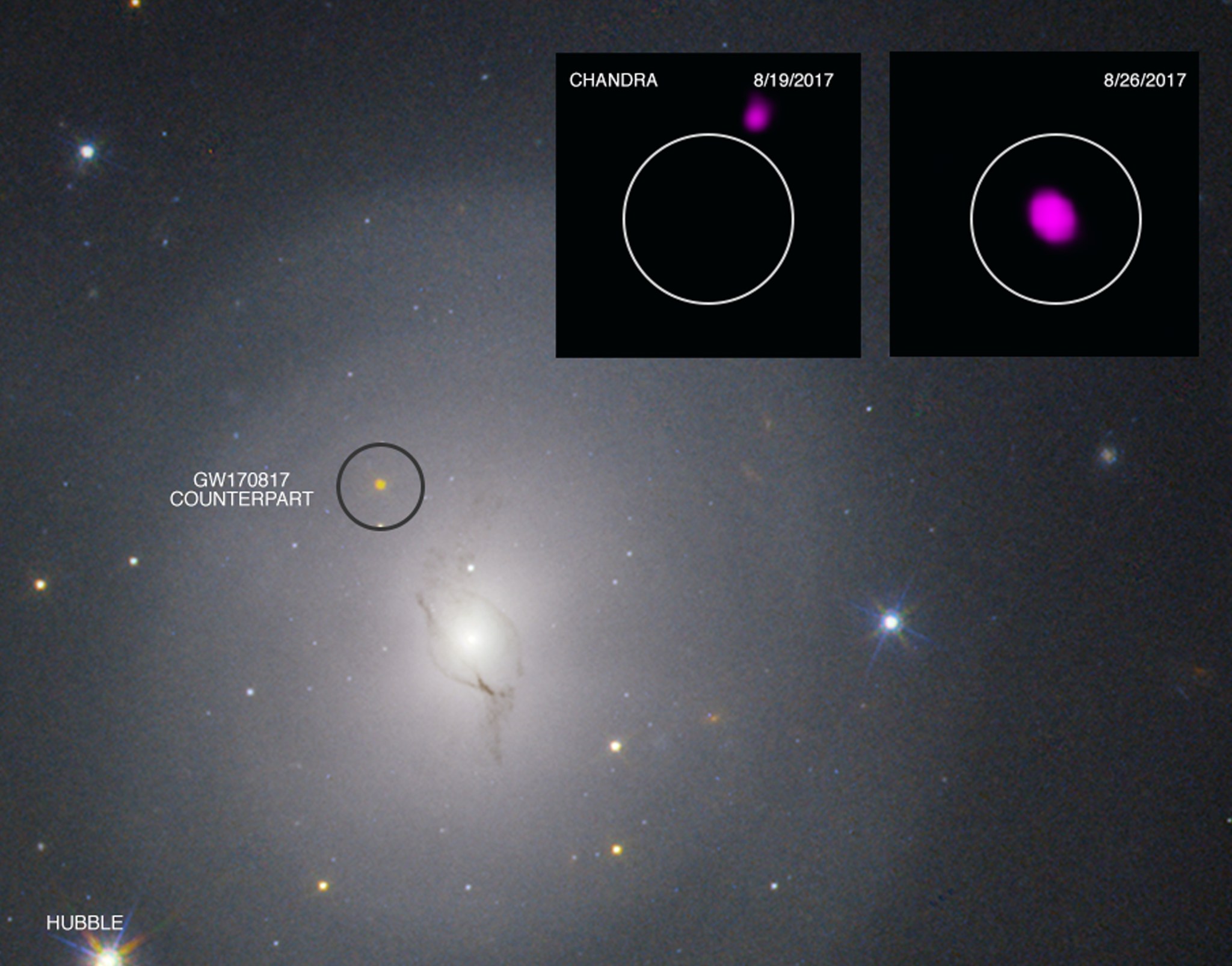
Astronomers have used NASA’s Chandra X-ray Observatory to make the first X-ray detection of a gravitational wave source, which was discovered on Aug. 17, located in the NGC 4993 galaxy about 130 million light years from Earth. The inset shows a Chandra non-detection of X-rays from the source Aug. 19, and the subsequent detection Aug. 26. The main panel of the graphic is the Hubble image of NGC 4993, using data obtained on Aug. 22. This discovery of detecting the aftermath of this gravitational wave event — the first to produce an electromagnetic signal of any type — represents the beginning of a new era in astrophysics. Read more here. (X-ray: NASA/CXC/Northwestern U./W. Fong & R. Margutti et al. & NASA/GSFC/E. Troja et al.; Optical:NASA/STScI)
Expedition 53 Spacewalk Successfully Comes to an End
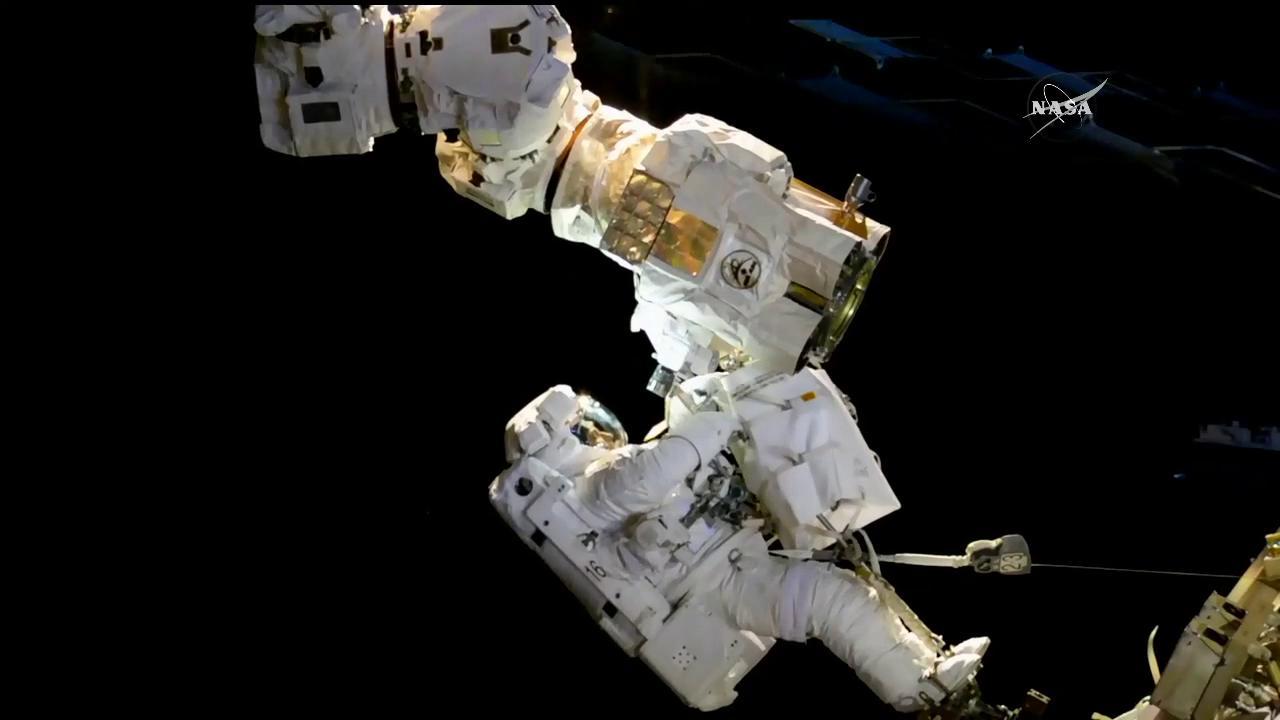
NASA astronauts Randy Bresnik and Joe Acaba install a new camera system to the latching end effector of the Canadaarm2 Oct. 20 on the International Space Station. They also installed a high definition camera on the starboard truss of the station and replaced a fuse on the Dextre robotic arm extension. The duo worked quickly and were able to complete several “get ahead” tasks. This was the fifth spacewalk of Bresnik’s career and the third for Acaba. Space station crew members have conducted 205 spacewalks in support of assembly and maintenance of the orbiting laboratory. Spacewalkers have now spent a total of 53 days, 6 hours and 25 minutes working outside the station. (NASA)
Marshall Celebrates National Disability Employment Awareness Month
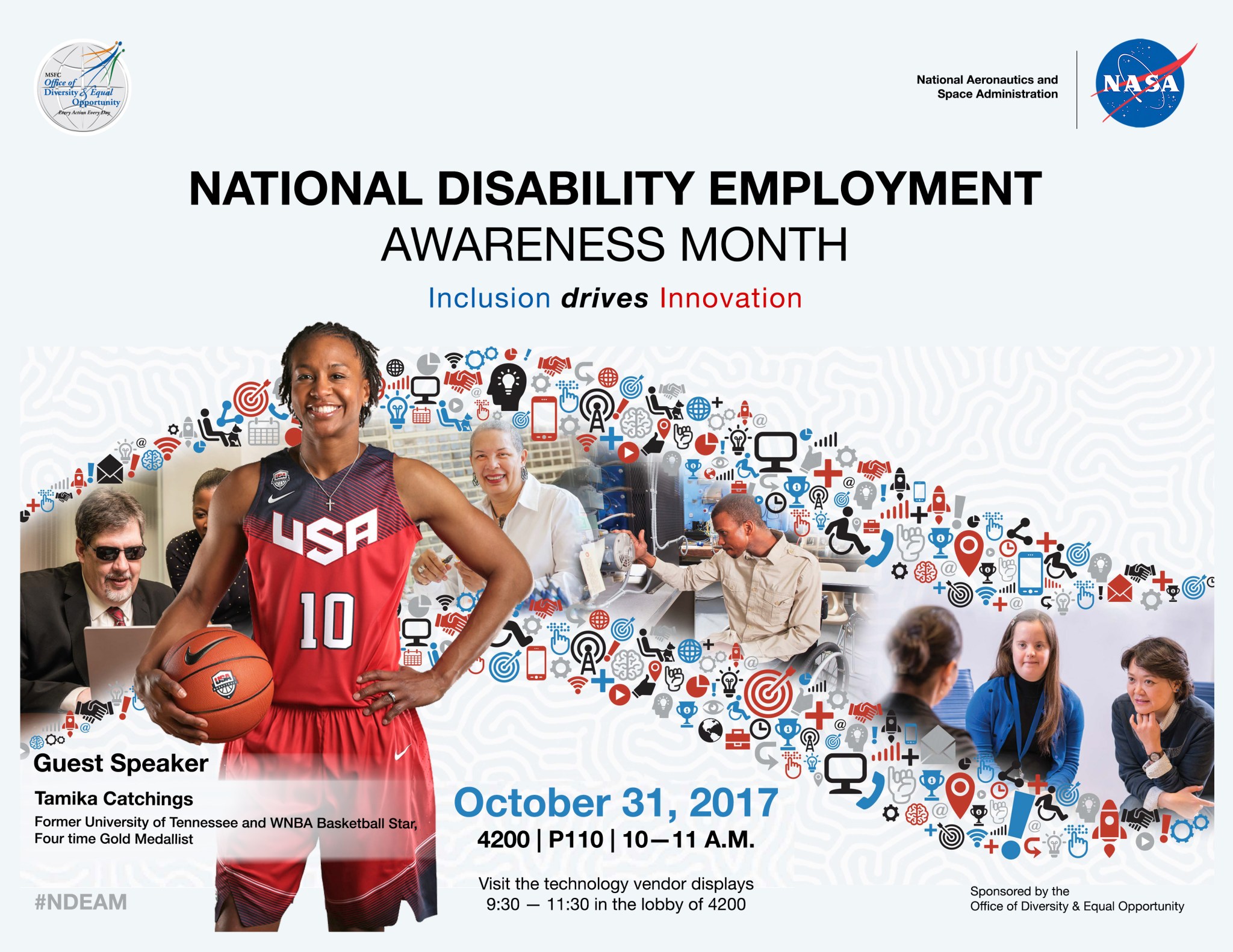
NASA’s Marshall Space Flight Center celebrates National Disability Employment Awareness Month this October by recognizing contributions of individuals with all types of disabilities. To mark the observance, Marshall team members are encouraged to attend an event featuring four-time Olympic gold medalist and WNBA basketball star Tamika Catchings at 10 a.m. Oct. 31 in Building 4200, Room P110. Catchings will highlight her career trials and triumphs as a professional athlete. The event is sponsored by Marshall’s Office of Diversity and Equal Opportunity, which strives to promote diversity, equality and inclusion for all individuals, while providing a workplace that is free from discrimination, including harassment and retaliation. (NASA/MSFC)
Marshall Celebrates America Recycles Day with Annual ‘Go Green — Buy Local’ Event
By Morgan MacMillan
NASA Marshall Space Flight Center’s Sustainability Program will host the 4th Annual “Go Green — Buy Local” event in recognition of America Recycles Day Oct. 30 through Nov. 3, in the lobby of Building 4203 from 9 a.m. to 4 p.m. Vendors will have a number of local crafts and items on hand produced using upcycled and sustainable products for purchase.
“Buying products made locally cuts down on packaging waste and reduces fuel consumption in transporting products, reducing greenhouse gas emissions,” said Donna Leach, lead of America Recycles Day activities at Marshall.
America Recycles Day is a national event celebrated Nov. 15 to promote recycling and environmental stewardship in the United States.
“Marshall strives to maintain an effective, sustainable recycling program year-round,” said Leach, Marshall’s Sustainability coordinator. “Single-stream recycling bins, located throughout the center, collect mixed recyclables and provide a quick, convenient way to recycle without the need to sort materials.”
In recognizing America Recycles Day, Leach encourages team members to re-familiarize themselves with Marshall’s single-stream and general recycling guidelines. For more information about America Recycles Day, recycling and Marshall’s Sustainability Program, click here.
MacMillan, an ASRC Federal/Analytical Services employee, supports the Office of Strategic Analysis & Communications.
Marshall Ambulance Services to Change Effective Nov. 1
By Morgan MacMillan
NASA Marshall Space Flight Center’s Office of Center Operations is increasing ambulance services to Redstone Arsenal, while introducing a more cost-effective funding strategy.
Ambulance services are provided by Huntsville Emergency Medical Services Inc., more commonly known as HEMSI, and have historically been paid for by Marshall. That will continue for work-related injuries. But starting Nov. 1, individuals will be responsible for covering charges for transportation related to personal illnesses.
“The emergency service process isn’t going to change,” explained David Thaxton, Marshall’s occupational health officer. “People will still call 911 if they have a medical emergency on center. The only difference is, if they get transported for a personal illness, such as a heart attack, stroke, etc., then they will be responsible for those costs.”
The changes will allow the center to maintain rapid emergency transport while reducing costs and offering services to all Team Redstone members, once available only to Marshall team members.
“Our main priority is to provide our team members with quick response times and immediate care; we want to make sure they’re taken care of,” said Roy Malone, Marshall’s director of the Office of Center Operations. “We’ve had a great partnership with HEMSI for many years and we are excited to continue that.”
MacMillan, an ASRC Federal/Analytical Services employee, supports the Office of Strategic Analysis & Communications.
This Week in NASA History: STS-34 Lands – Oct. 23, 1989
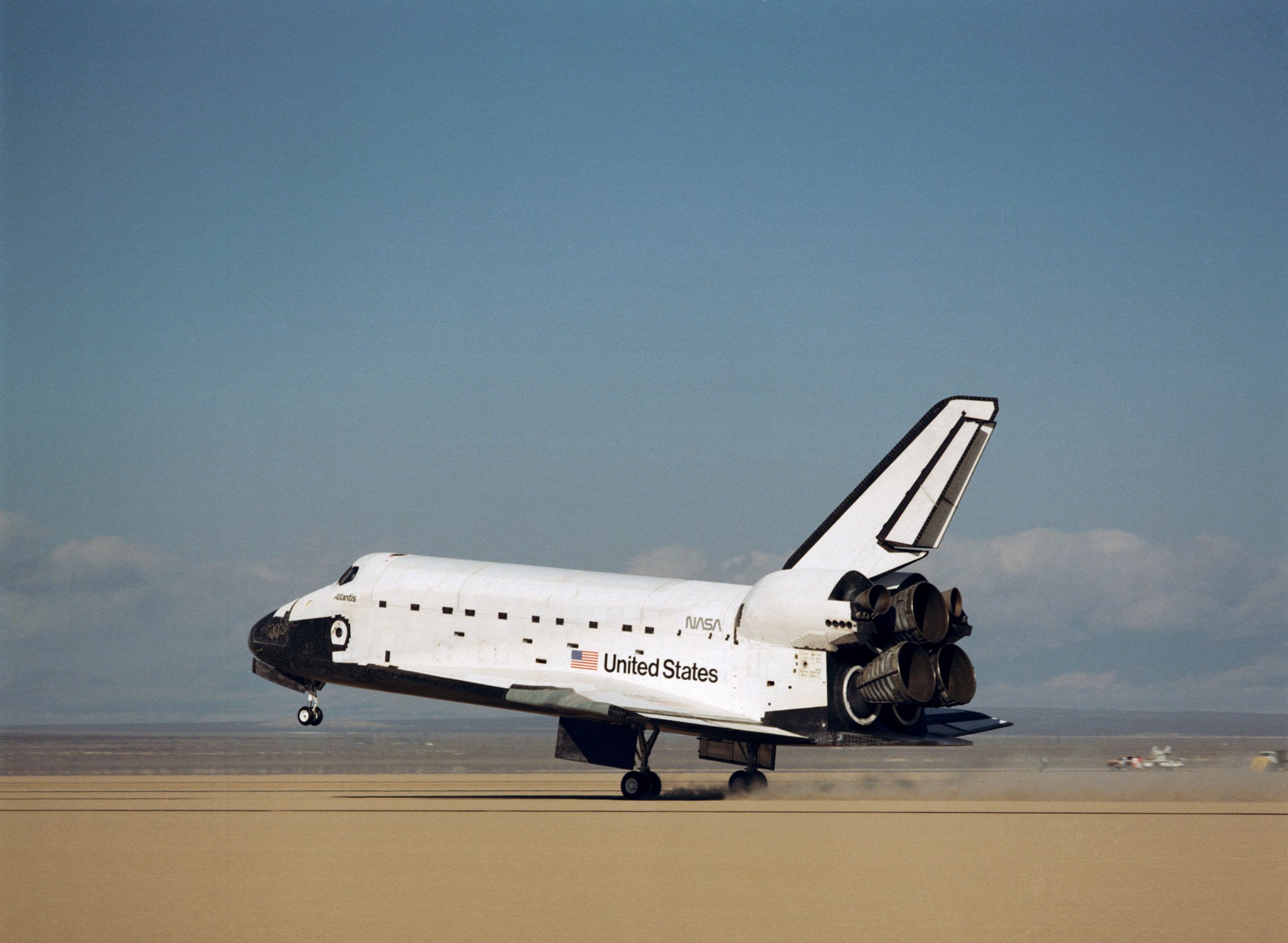
This week in 1989, the space shuttle Atlantis and STS-34 landed at Edwards Air Force Base in California following a successful four-day mission. The primary objective of the mission was to deploy the Galileo spacecraft on its six-year journey to Jupiter. Today, the current spacecraft exploring Jupiter is the Juno mission, which launched Aug. 5, 2011, and arrived at Jupiter July 4, 2016. Juno is part of the New Frontiers Program managed by NASA’s Marshall Space Flight Center’s Science Mission Directorate. The goal of the mission is to understand the origin and evolution of Jupiter, look for its solid planetary core, map its magnetic field, measure water and ammonia in the planet’s deep atmosphere and observe auroras. The NASA History Program is responsible for generating, disseminating and preserving NASA’s remarkable history and providing a comprehensive understanding of the institutional, cultural, social, political, economic, technological and scientific aspects of NASA’s activities in aeronautics and space. For more pictures like this one and to connect to NASA’s history, visit the Marshall History Program’s webpage. (NASA)




